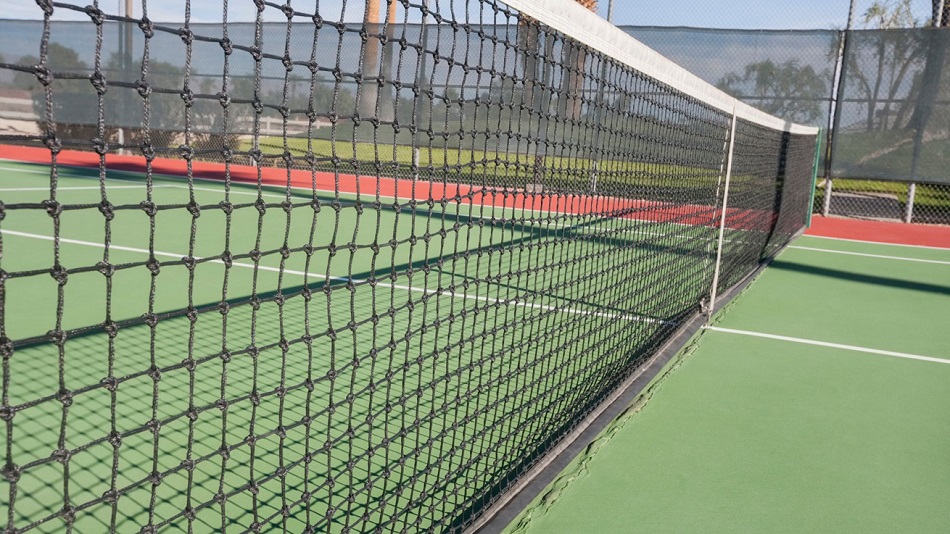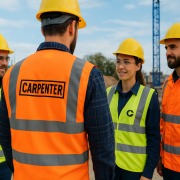Construction sites depend on clear communication, well-defined roles, and consistent safety practices. As job sites grow larger and involve numerous subcontractors, ensuring that workers can recognize each other, understand job functions, and navigate the environment efficiently becomes increasingly important. This is one reason many contractors now integrate high visibility clothing with custom screen printing as part of their standard operational strategy. Beyond meeting safety requirements, this combination plays a direct role in improving jobsite workflow, minimizing confusion, and creating smoother day-to-day operations.
However, the adoption of this gear is not only about compliance or branding. It involves decisions that require balancing cost, durability, worker comfort, visibility standards, and the unique constraints of busy construction environments. Understanding how these considerations interact helps companies evaluate which solutions best support productivity while maintaining safety and professionalism.
This article examines how hi-vis clothing with personalized screen printing enhances efficiency on construction sites, explores the trade-offs involved in choosing different approaches, and highlights the operational impacts companies should consider when integrating high visibility workwear into their workflow strategy.
Visibility as the Foundation of Workflow Efficiency
At its core, construction workflow depends on workers being able to quickly identify each other and understand their surroundings. Hi-vis clothing plays a foundational role in making this possible. It helps equipment operators recognize people on foot, gives supervisors a quick way to assess worker placement, and ensures crews remain visible under varied lighting and weather conditions. When reflective safety wear is used consistently, it reduces the likelihood of miscommunication and allows workers to move more confidently and efficiently within the site.
Workflow benefits appear early each day. As workers arrive, teams can immediately disperse to assigned areas because visibility ensures foremen can spot their crews quickly. During active operations, crane operators, truck drivers, and machinery handlers rely on visibility to make decisions with minimal delays. Even small improvements in how quickly individuals are spotted can add up to measurable gains in overall site coordination.
Yet visibility alone does not solve the problem of identifying roles. Construction sites often include electricians, plumbers, equipment operators, inspectors, general laborers, and subcontractors—all wearing similar gear. Without a way to differentiate them at a glance, workflow becomes dependent on verbal communication, which slows operations and increases risk during fast-paced tasks.
This is where branding, identification, and differentiation begin to matter.
Adding Clarity Through Personalised Screen Printing
The integration of personalised screen printing onto hi-vis clothing creates an efficient visual communication system. When workers can identify roles, companies, and responsibilities instantly—without stopping work or asking questions—workflow improves naturally.
Personalisation may include:
-
Company logos
-
Worker names or ID numbers
-
Trade classifications (e.g., “ELECTRICIAN,” “CARPENTER,” “SITE SUPERVISOR”)
-
Crew numbers or project phases
-
Safety messages or specific jobsite identifiers
These visual markers reduce confusion in high-traffic areas and limit downtime during inspections, interactions with subcontractors, or coordination between teams. For instance, when a supervisor can immediately recognize a specific subcontractor’s crew, instructions can be delivered faster, and misrouted tasks become less common. Similarly, equipment operators can identify signalers or spotters based on unique markings, reducing the risk of miscommunication during machinery operation.
However, while custom shirt printing can strengthen workflow efficiency, companies must evaluate the trade-offs associated with various printing techniques, garment types, and the long-term wearability of the gear. Not all processes perform equally in rugged, dirty, or weather-exposed environments.
Understanding the balance between durability, comfort, and cost is key.
Balancing Durability and Comfort
Construction environments are harsh on apparel. Workers are exposed to dirt, oil, concrete dust, sharp edges, and unpredictable weather. Reflective safety wear must survive daily conditions without fading, peeling, or becoming uncomfortable.
Fabric Durability vs. Worker Comfort
Hi-vis gear is manufactured using different materials—polyester mesh, solid polyester, cotton blends, or treated high-visibility fabrics. Each material has benefits and drawbacks:
-
Polyester mesh increases breathability but may wear faster when exposed to abrasion.
-
Solid polyester offers superior durability but retains heat, making it less comfortable in hot climates.
-
Cotton blends improve comfort and may feel softer but typically fade sooner and provide lower water resistance.
Companies must choose fabrics that align with seasonal conditions, shift durations, and worker needs. For example, a cold-weather project might prioritize durability and insulation, while road construction in summer demands breathability and heat dissipation.
This balance directly affects workflow. Uncomfortable workers experience fatigue faster, make slower movements, and may require frequent breaks, all of which impact productivity. On the other hand, using overly lightweight gear that deteriorates quickly leads to supply interruptions and the need for frequent reordering, disrupting consistency on the jobsite.
Balancing Print Longevity with Cost
Personalised screen printing can be applied in several ways—traditional plastisol ink, water-based ink, reflective ink, or specialty prints. The challenge is that not all printing types bond equally with all hi-vis fabrics.
-
Long-lasting prints offer professional appearance but cost more upfront.
-
Lower-cost prints reduce initial expenses but may crack or fade under heavy use.
Contractors must weigh the cost-benefit ratio. Replacing gear more often due to peeling prints may ultimately cost more than investing in durable printing from the start. Conversely, high-end printing on short-term contracts may not provide meaningful ROI.
Workflow depends on consistency. When prints fade or peel, role identification suffers, and crews lose the clarity that supports efficient communication.
Role Identification and Faster On-Site Coordination
A major workflow challenge on construction sites is the coordination of diverse workers and subcontractors. Without visual differentiation, supervisors must rely on radio communication, verbal identification, or walking the site to find the right personnel. These small delays accumulate daily.
Personalised identification on high visibility workwear—through custom elements, crew labels, or color-coded prints—creates a structured visual system that speeds up operations. Workers know exactly who is responsible for which task, and supervisors can immediately verify whether the correct personnel are present in designated areas.
Examples of Workflow Improvements
-
Tool and equipment distribution becomes faster when logistic staff can instantly identify which crew requires which items.
-
Inspections move more quickly when inspectors know where to locate specific trades.
-
Emergency responses are faster when first responders can identify safety officers at a glance.
-
Large projects with multiple subcontractors achieve smoother interactions as each group becomes visually distinguishable.
These workflow improvements also reduce the number of errors caused by miscommunication, misplaced personnel, or mistaken role assumptions.
Enhancing Safety Without Reducing Productivity
It is easy to look at safety gear purely as a compliance measure, but its relationship to workflow is deeply interconnected. Reflective safety wear does more than prevent accidents—it creates an environment where productivity can thrive without sacrificing safety.
Workers who can move confidently without fear of going unnoticed by equipment operators perform tasks more efficiently. Equipment operators who can clearly identify ground personnel waste less time pausing or waiting for clear pathways. Supervisors who can quickly assess worker visibility in low-light conditions prevent bottlenecks caused by safety concerns.
However, there is a trade-off: gear that maximizes visibility may not always maximize comfort. For example:
-
Heavier garments with extensive reflective tape improve visibility but slow down movement.
-
Lighter garments improve comfort but may not meet visibility requirements in certain weather or lighting conditions.
Companies must ensure that their choices do not compromise worker safety in favor of short-term efficiency gains. A balance between reflective coverage, garment design, and task-specific needs is essential.
Professionalism, Accountability, and Worker Morale
A construction site that uses well-designed, personalised, and consistent high visibility workwear often gives the impression of better organization, improved professionalism, and stronger accountability. These intangible factors have a real impact on workflow.
Professional Appearance and Client Perception
Clients visiting a site are more likely to trust contractors who maintain orderly, branded, and professional-looking teams. This can improve communication, speed up approvals, and reduce friction during project reviews.
Accountability Through Identification
When personalised screen printing includes names, roles, or ID numbers, it creates natural accountability. Workers feel more responsible for maintaining professional conduct, and supervisors gain an easy method for monitoring performance.
Improved Worker Morale
Comfortable, high-quality, well-fitted reflective safety wear contributes positively to morale. Workers appreciate gear that fits well, feels durable, and represents the company professionally. Higher morale often correlates with higher productivity and fewer workflow disruptions.
Challenges to Consider When Implementing Printed Hi-Vis Gear
Adopting printed hi-vis clothing across a construction workforce involves several challenges that companies must navigate carefully.
Cost Management
High-quality personalised gear requires more investment than unbranded alternatives. Companies must decide whether to standardize fully or prioritize certain roles. Balancing cost with print durability and worker comfort is an ongoing challenge.
Supply Chain Consistency
Large crews require consistent gear to maintain visual identity. Disruptions in fabric availability, dye lots, or printing batches can result in mismatched colors or inconsistent visibility levels, undermining workflow clarity.
Wear and Tear
Construction work is demanding. Even the best high visibility workwear will degrade under constant exposure to dust, oils, and harsh surfaces. Companies must plan for replacement cycles without disrupting branding or identification systems.
Environmental Factors
Weather impacts hi-vis effectiveness. Rain, mud, and low light all affect how reflective materials perform. Gear that works well on one site may not be suitable for another with different environmental conditions.
Worker Buy-In
Not all workers are equally receptive to standardization. Some prefer their own clothing or resist certain fits or fabrics. Clear communication about safety, workflow benefits, and company expectations is necessary.
The Impact of Consistent Gear on Overall Workflow Strategy
When companies integrate reflective safety wear and personalised screen printing effectively, the impact on workflow is significant:
-
Faster coordination
-
Fewer interruptions
-
Improved safety awareness
-
Streamlined supervision
-
Better role clarity
-
Stronger team cohesion
However, these benefits depend on thoughtful planning. Simply distributing printed hi-vis apparel does not guarantee improvements. The broader strategy—including gear selection, printing method, replacement planning, and worker communication—determines the outcome.
Companies must evaluate their specific site conditions, workforce size, project duration, and operational priorities before selecting gear. Considering long-term costs, safety standards, comfort levels, and weather patterns ensures that the chosen approach aligns with real-world workflow needs.
Final Thoughts
Improving construction workflow is not only about advanced machinery or optimized planning; often, it begins with simple, highly practical choices such as the selection of hi-vis clothing and the use of custom shirt printing to create clarity and consistency. When workers are easily identifiable, visible in all conditions, and equipped with durable and comfortable gear, the entire jobsite operates more smoothly.
The effectiveness of this approach comes from balancing multiple factors: durability vs. comfort, visibility vs. mobility, cost vs. long-term value, and customization vs. simplicity. Thoughtful decision-making ensures that reflective safety wear supports daily operations rather than complicating them.
Ultimately, integrating personalised, clearly marked high-visibility apparel is a strategic investment in workflow efficiency. Construction companies that prioritize consistent, well-designed gear not only enhance safety—they also gain meaningful improvements in productivity, communication, and overall site performance.













Comments